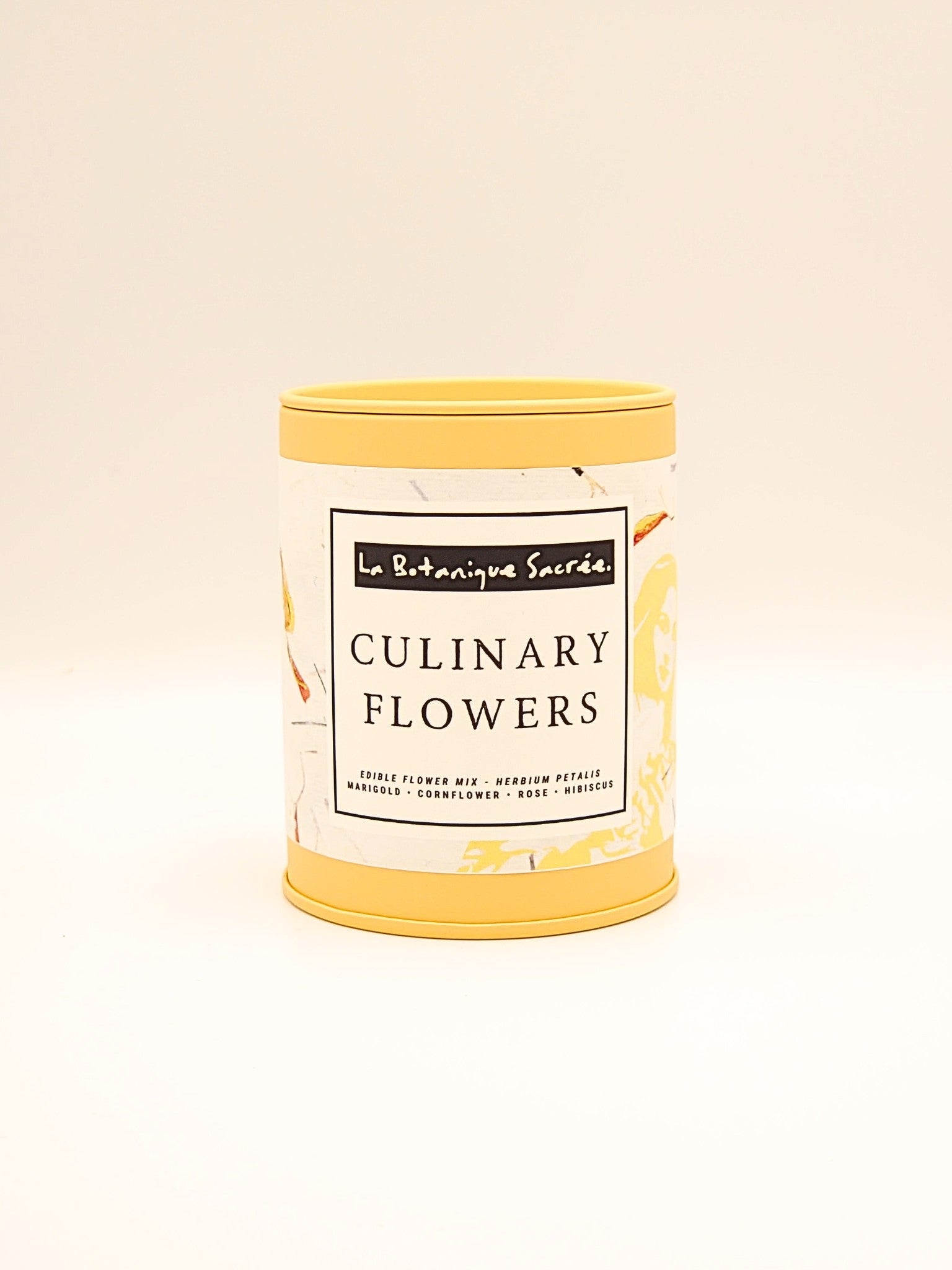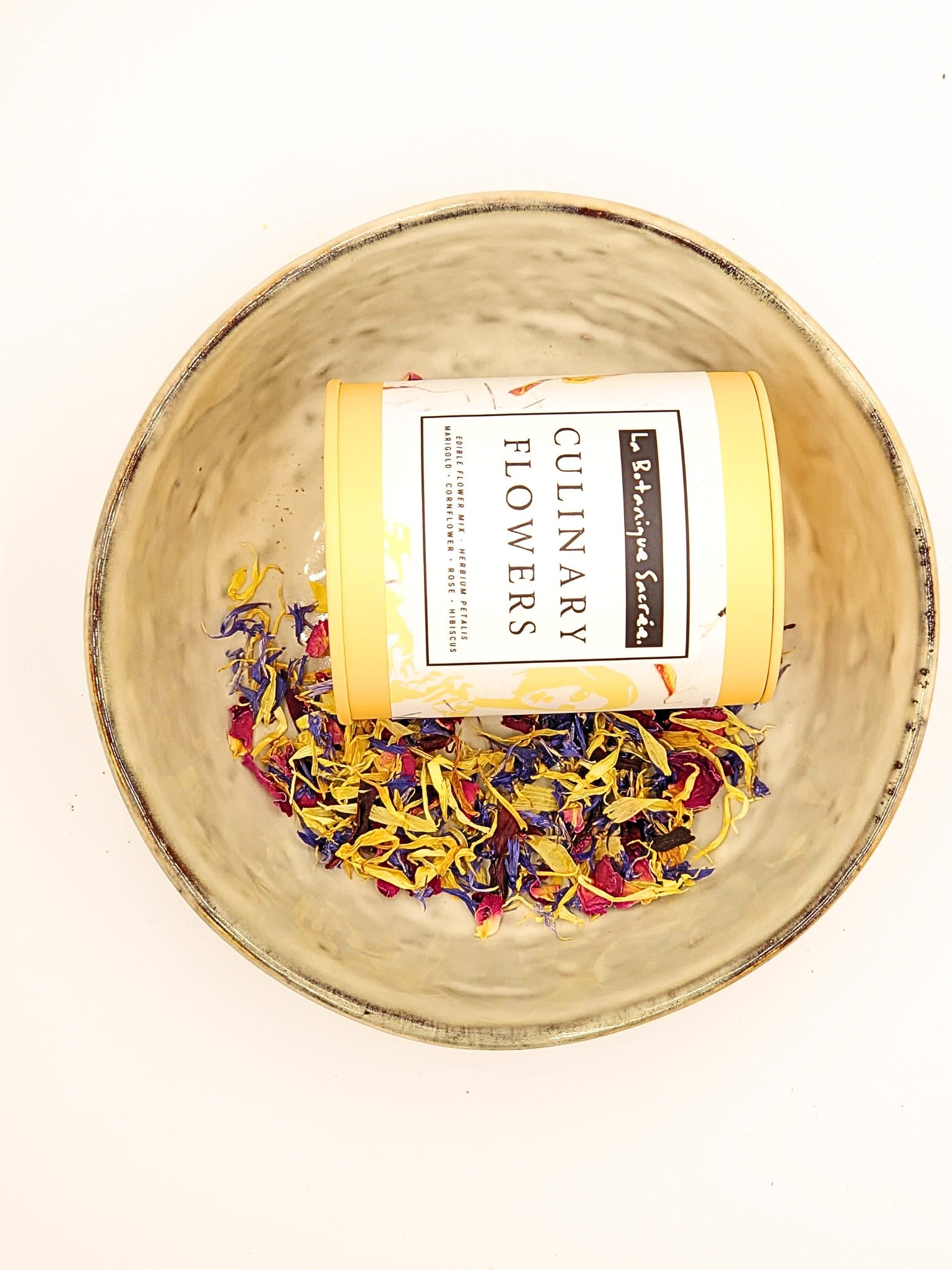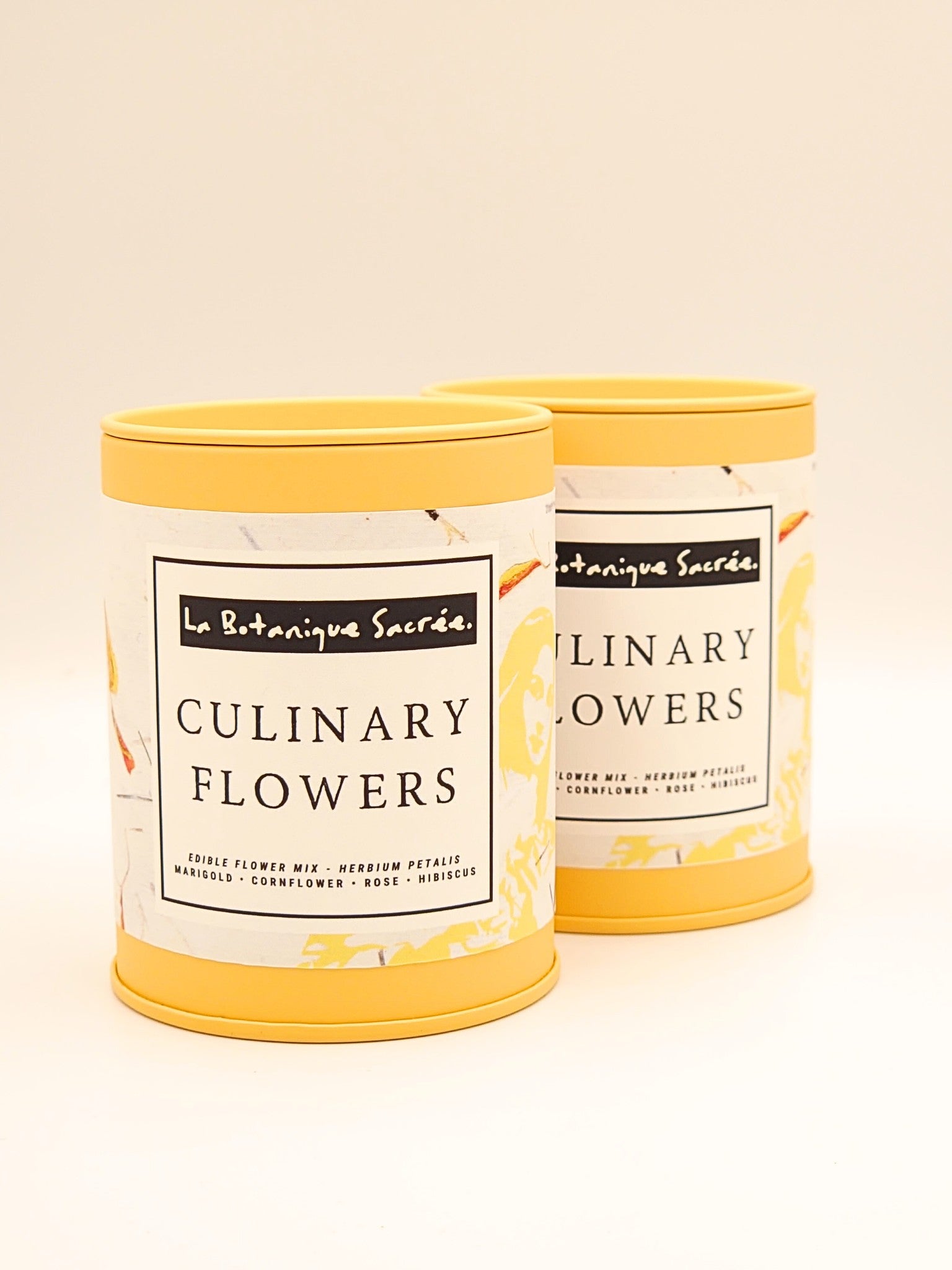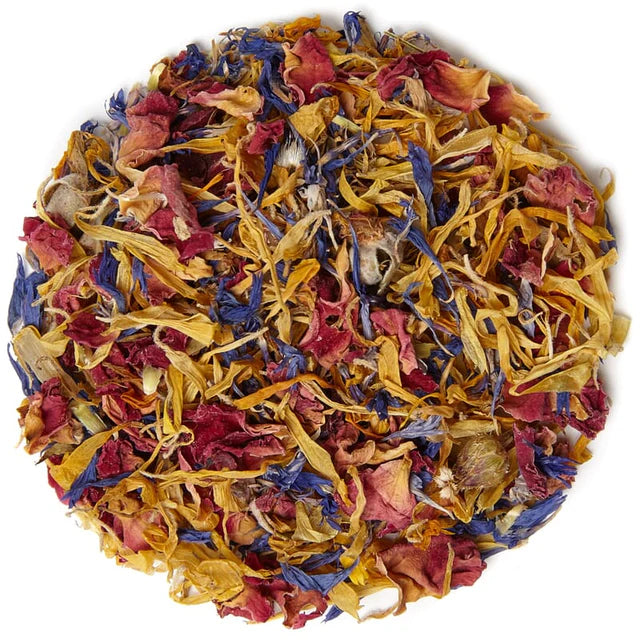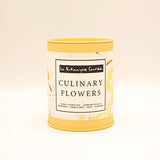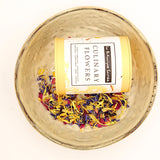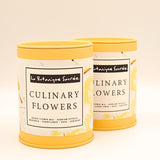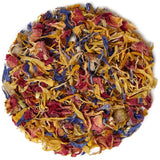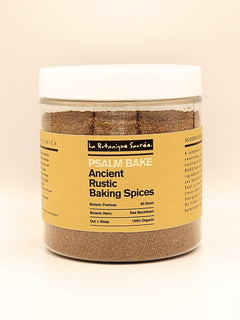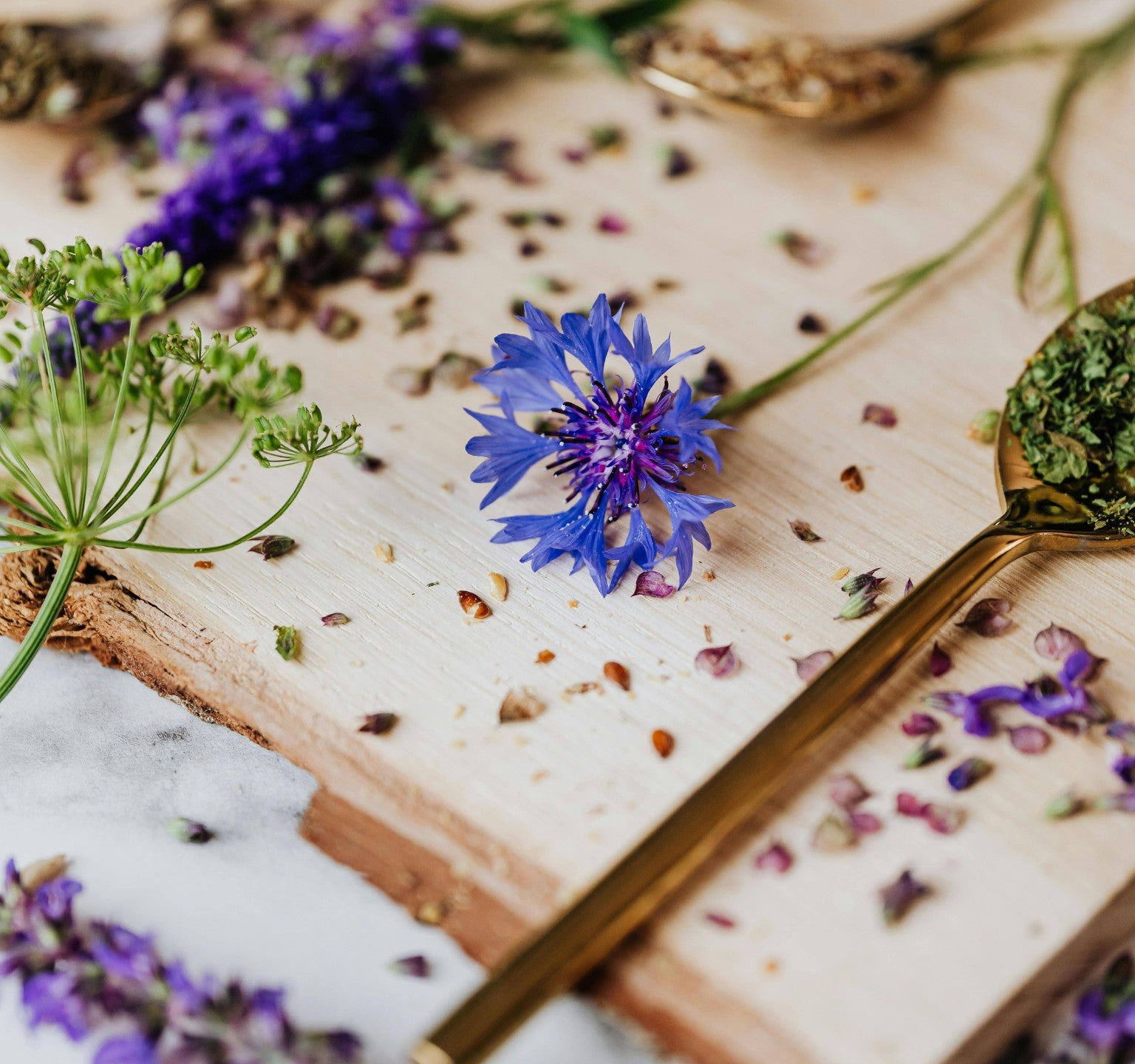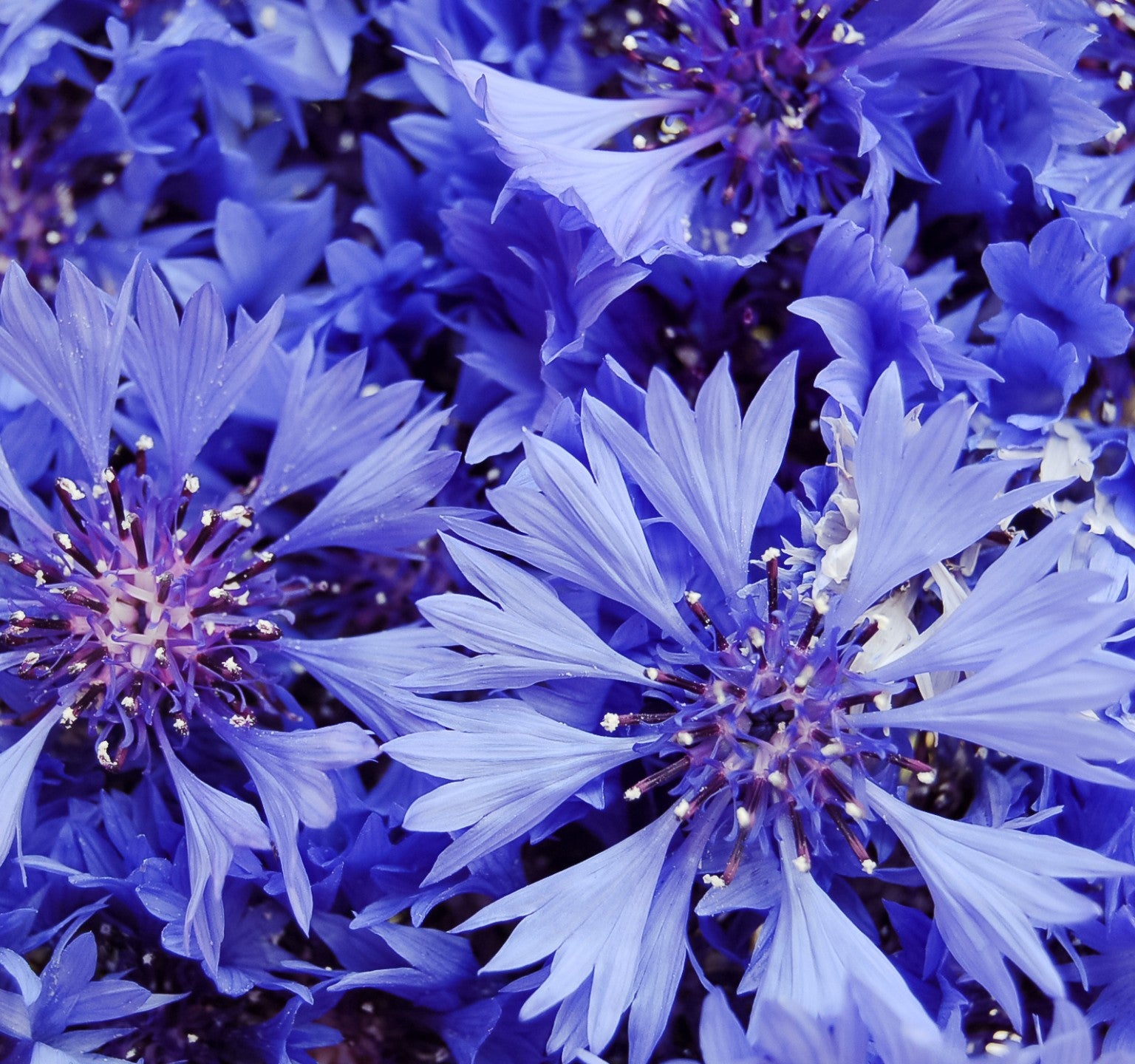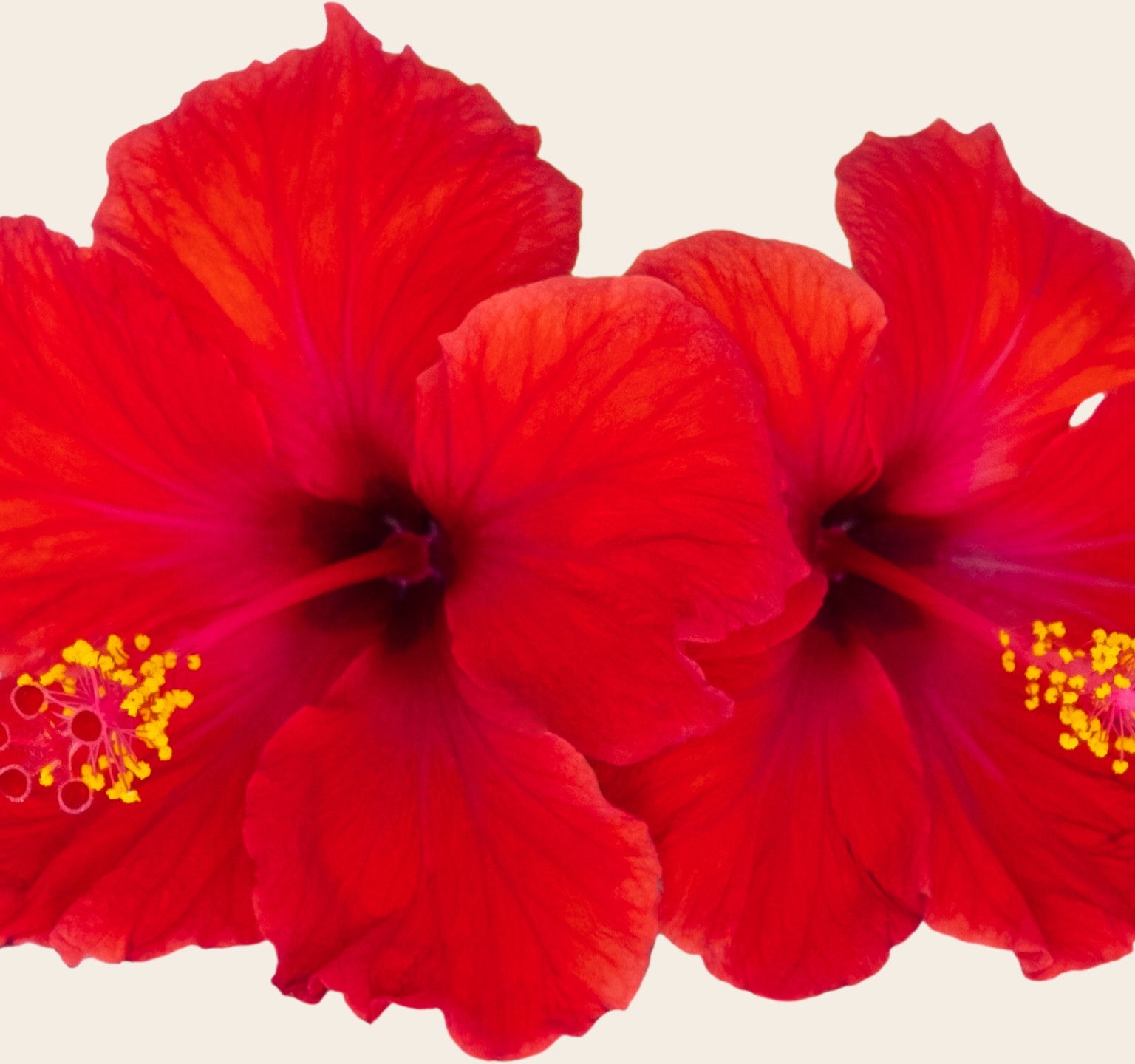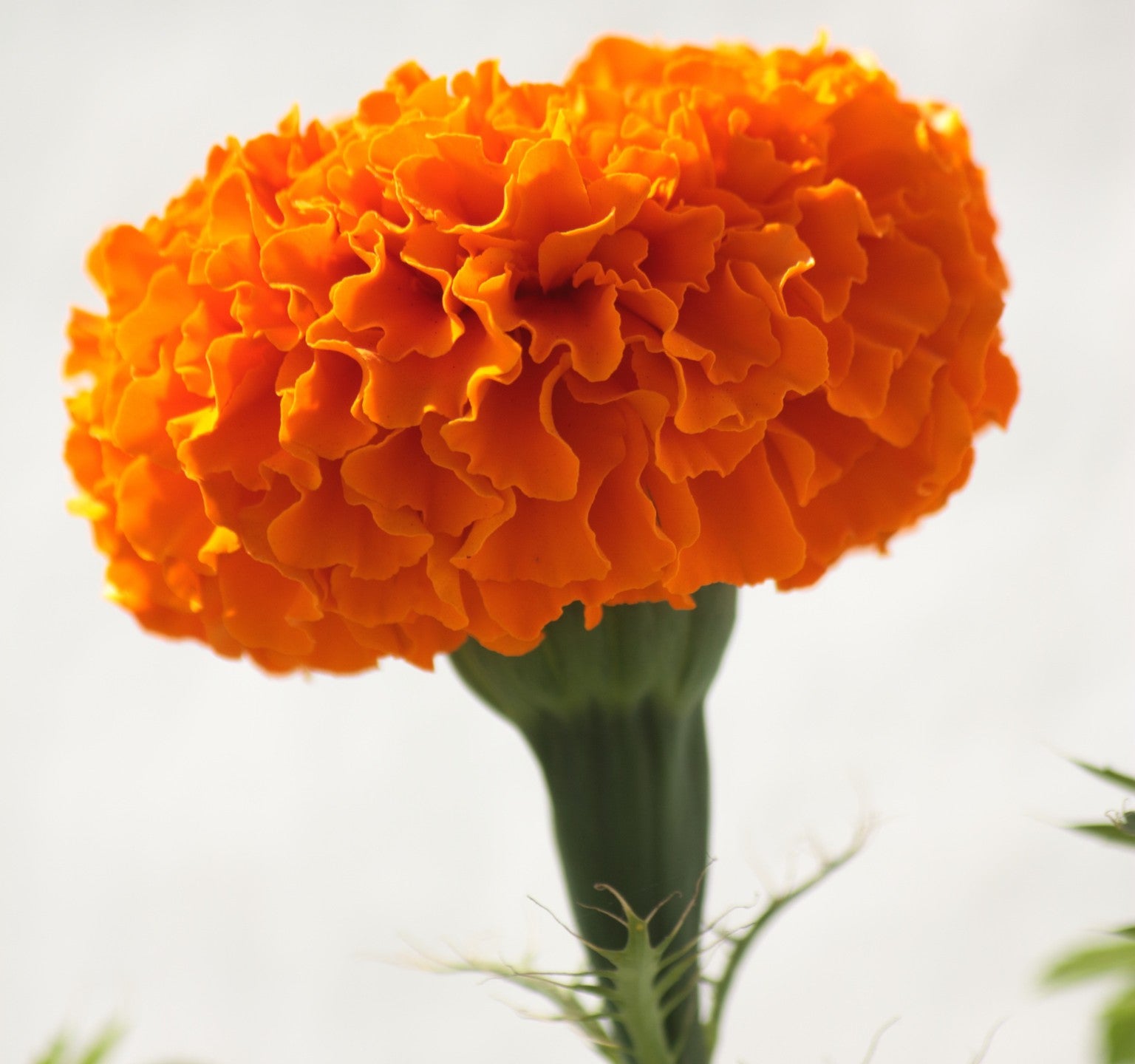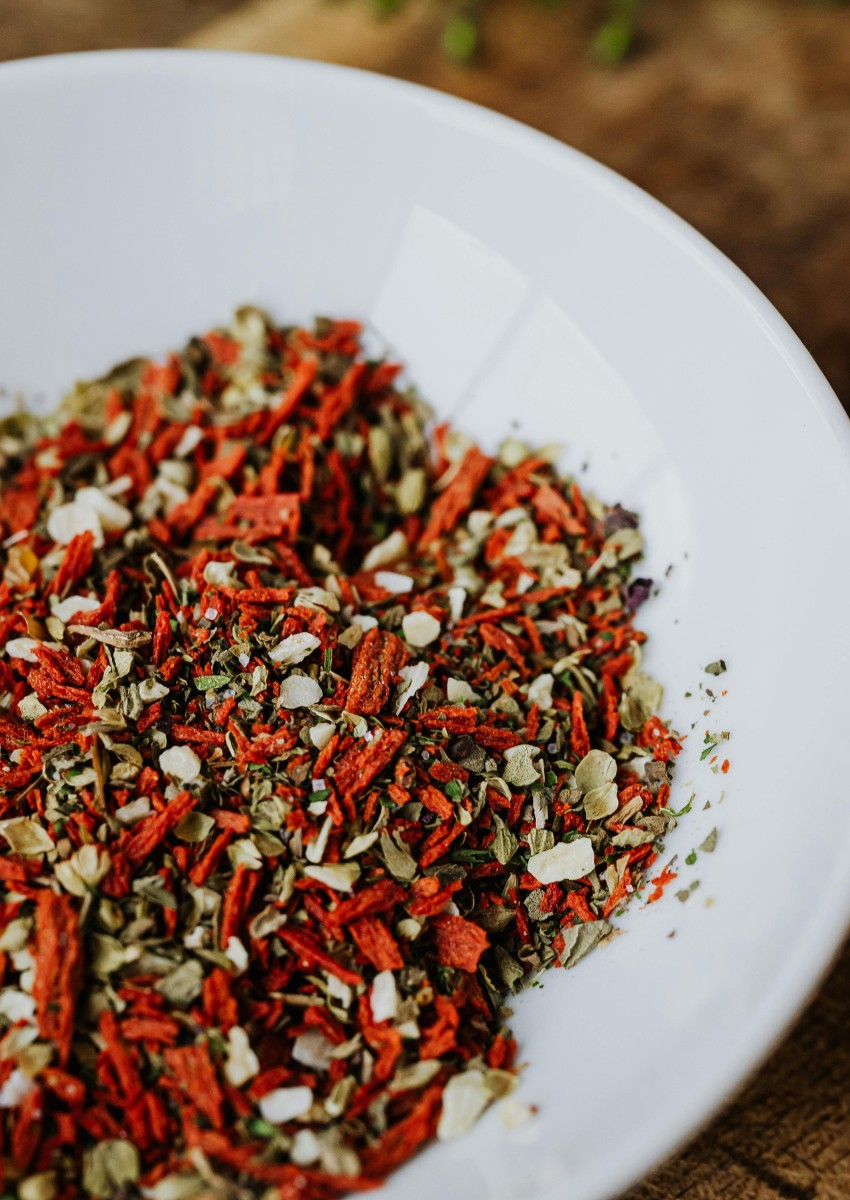Our Culinary Flowers Formula
You might be wondering
Which flowers are included and how do they taste?
Blend features hibiscus, marigold (calendula), cornflower (bachelor’s button), and rose. Hibiscus tastes tart and cranberry-like with a deep ruby hue. Cornflower reads mild, soft, cucumber-green. Calendula and rose are widely listed among edible flowers for gentle floral and lightly peppery notes.
Best ways to use this dried blend?
Garnish cakes, pastries, salads, and cheese plates. Float in cocktails or freeze into clear ice. Steep for tea or syrups; hibiscus delivers color and a clean tart line that also works in sauces and marinades.
Are edible flowers safe to eat?
Only food-grade flowers should be used. Florist or nursery blooms can be treated with chemicals not intended for consumption. Introduce in small amounts and consider individual allergies. University extensions advise avoiding any flowers exposed to pesticides or fresh manure and to use only verified edible species.
How should dried edible flowers be stored and how long do they keep?
Store airtight in a cool, dry, dark place away from heat and sunlight. General herb-drying guidance suggests best quality within about one year under proper storage. Keep petals as intact as possible for longevity.
About us
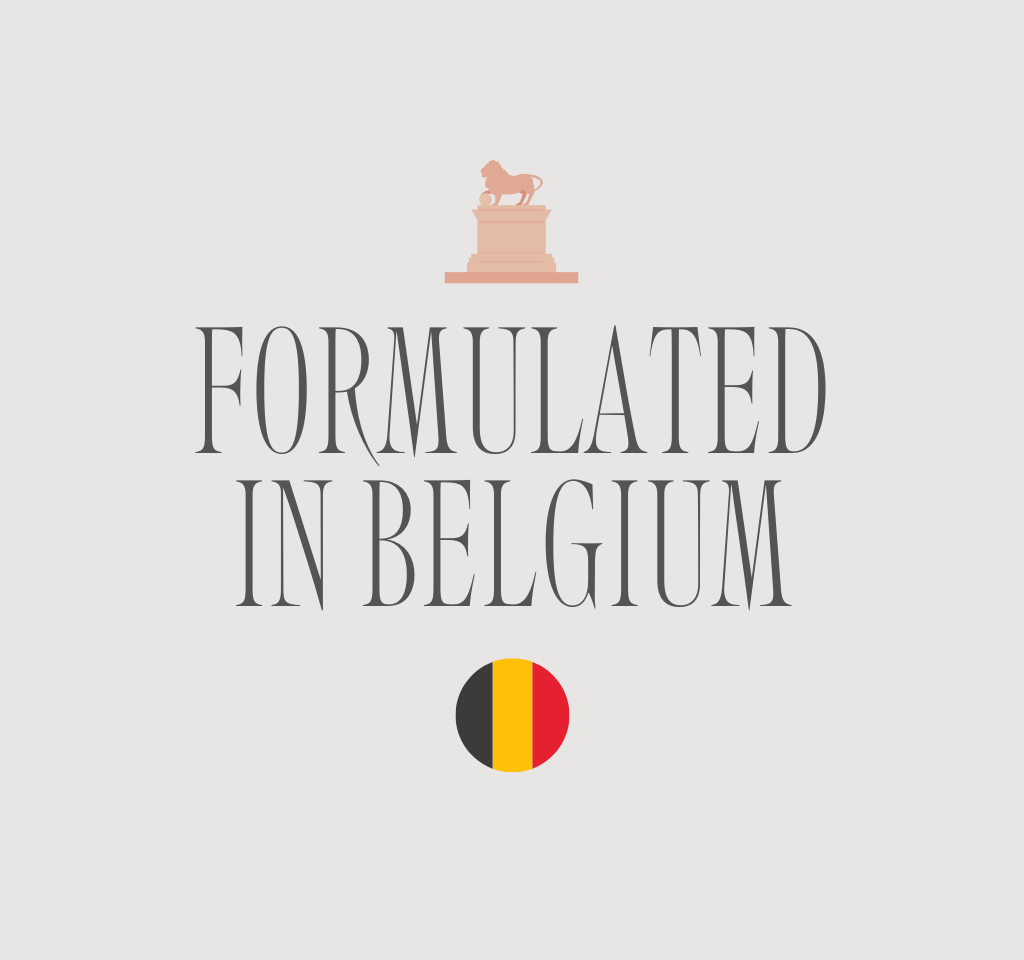
Small Family Atelier
We're a family-run studio tucked away in Dendermonde, where every blend is mixed by hand, in small batches, with obsessive care. It's quiet work. No machines humming. Just us, our raw ingredients, and a belief in doing things properly.

We Love Health
We care deeply about what goes into the body. That’s why every ingredient we use has a reason: rich in nutrients, chosen for its function, and combined with intent. Eating well isn’t a trend here. It’s just how we do things.
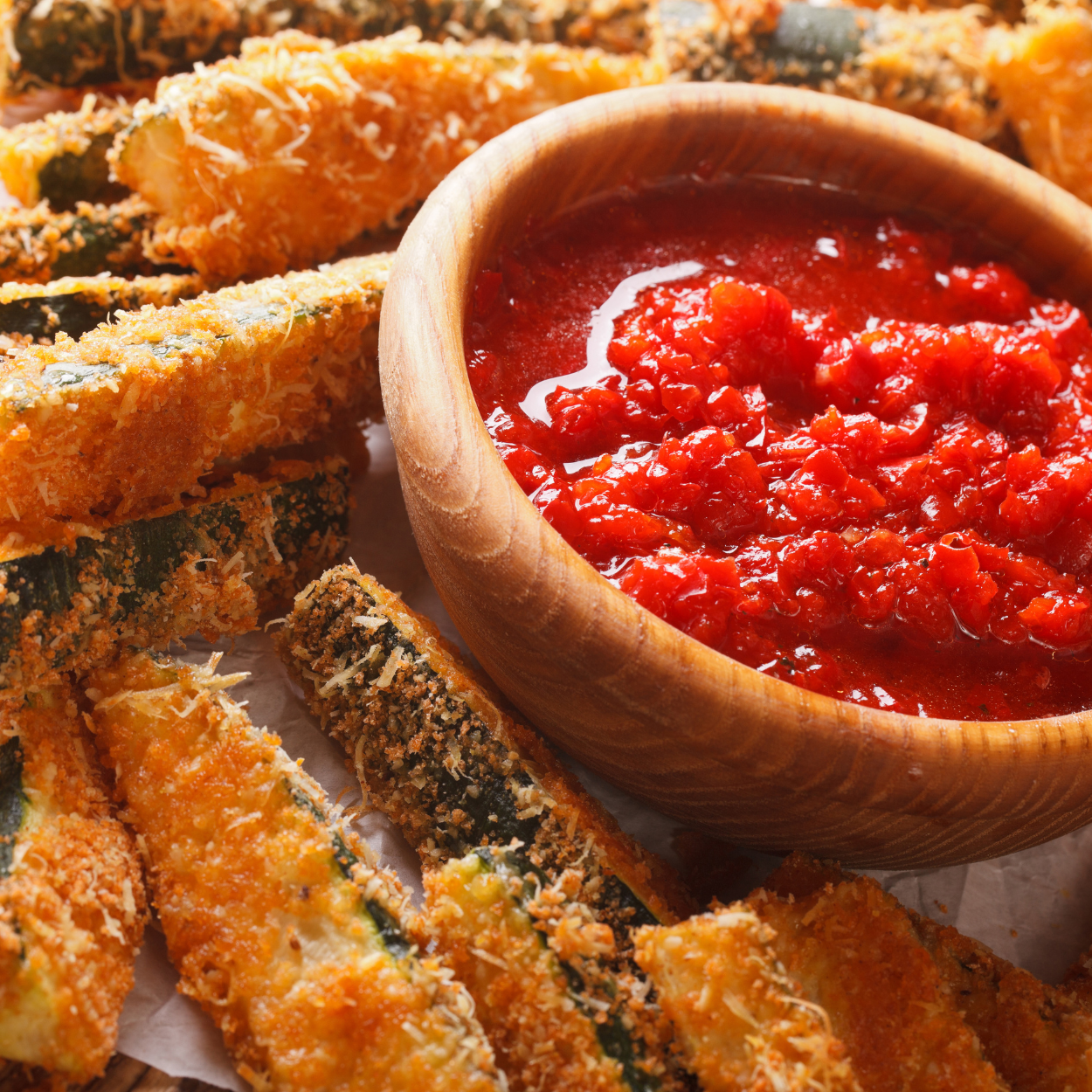
We Love Flavor
This isn’t health food that forgets to taste good. We blend for full flavor and use the finest ingredients to accomplish this. Whether it’s a morning egg or a slow Sunday stew, every sprinkle is designed to hit the senses and do the body good.


